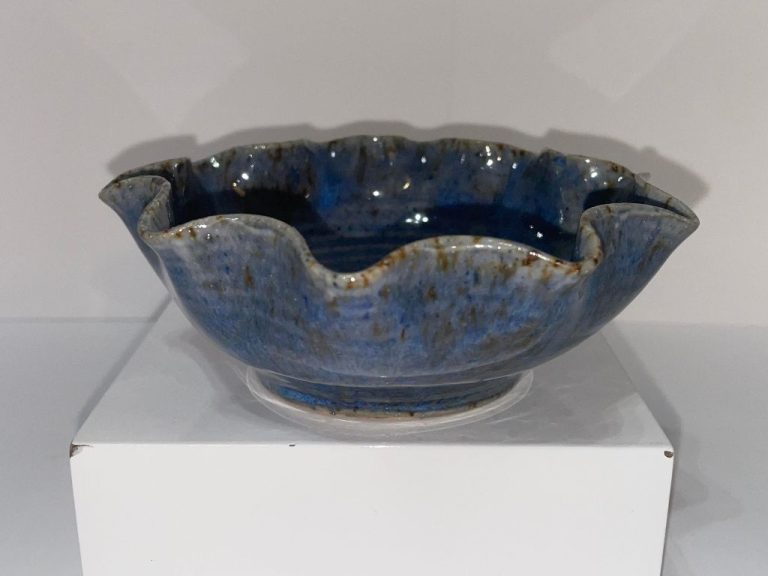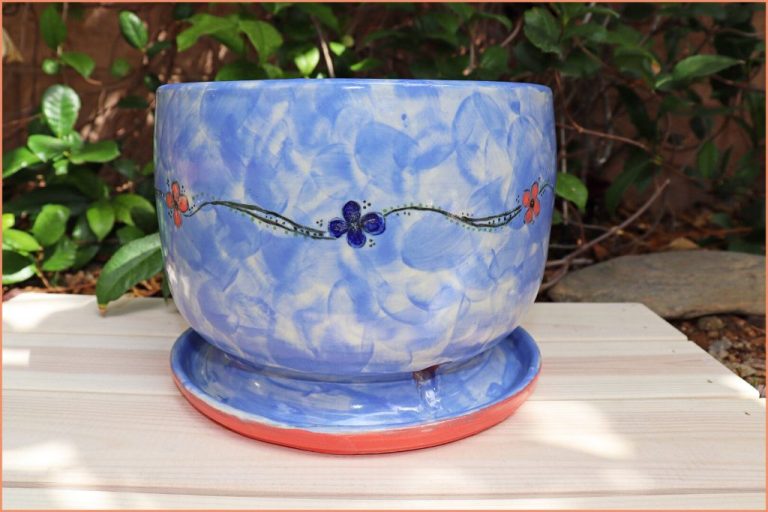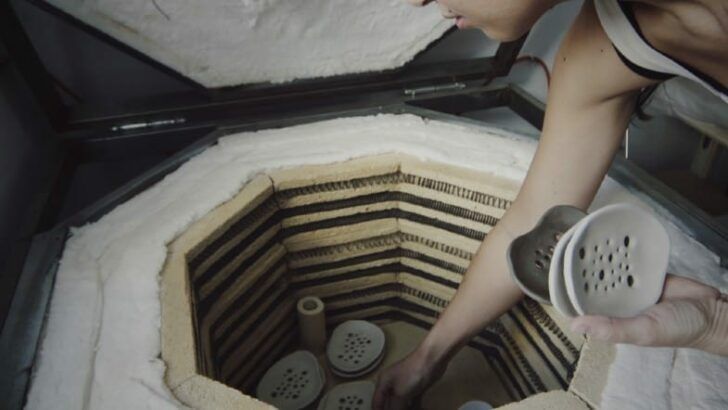Is My Clay Earthenware Or Stoneware?
Earthenware and stoneware are two common types of clay often used in pottery and ceramics. While they share some similarities, there are key differences between the two clays in their properties and manufacturing. This article aims to explain what distinguishes earthenware from stoneware, including the composition, firing temperatures, uses, and identifying characteristics of each. Understanding the variations between these clays can help both ceramic artists and collectors better select and evaluate clay pieces.
Definitions
Earthenware is a type of pottery made from clay that is fired at lower temperatures, typically between 1500-2200°F. It is porous and absorbs water. Earthenware clay contains iron and other minerals which allows it to fire at lower temperatures. It is less dense and brittle than stoneware. Common uses for earthenware include flower pots, decorative pieces, and tiles.[1]
Stoneware is a type of pottery that is fired at higher temperatures, typically between 2200-2400°F. The higher temperatures make stoneware non-porous and vitrified, meaning it will not absorb water. Stoneware clay has lower iron content and higher kaolin content, allowing it to withstand higher firing temperatures than earthenware. Stoneware is dense, durable, and chip/scratch resistant. Common uses include crockery, jugs, and casserole dishes.[2]
Properties
Earthenware and stoneware have distinct properties that differentiate them. Earthenware is made from lower-firing clays and has a porous body, which makes it less durable. It fires at lower temperatures ranging from 1,762–2,192°F (960–1,200°C). Earthenware is soft, brittle, and porous. It soaks up water and is not fully vitrified. Due to its porosity, glazes are essential for functional purposes and added color.
In contrast, stoneware utilizes higher-firing clays and is fired at higher temperatures between 2,192–2,462°F (1,200–1,350°C). This makes stoneware less porous and gives it a hard, dense body that is durable and watertight even without glazes. Stoneware has high mechanical strength and thermal shock resistance. It is opaque rather than translucent. The higher firing temperatures make stoneware less porous than earthenware and create a fully vitrified non-absorbent ceramic.
So in summary, earthenware is soft, brittle, porous and low-fired, while stoneware is hard, dense, vitrified and high-fired. Earthenware requires glazes for functionality while stoneware is watertight on its own.
Manufacturing
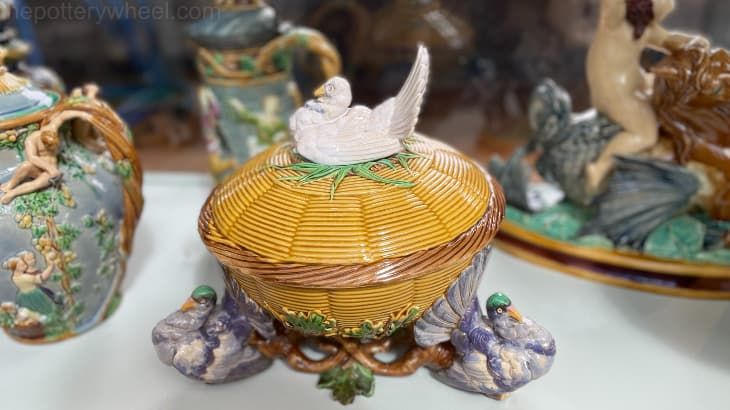
Earthenware is made from clay fired at lower temperatures, typically between 1000°C and 1150°C. The clay body remains porous after firing, resulting in pots that are not fully vitrified and unglazed earthenware can absorb water. Earthenware clays are often blended and mixed with non-plastic materials or “tempers” like sand, crushed rocks, or grog (ground up fired clay). This makes the clay more stable during firing and less likely to crack.[1]
Stoneware is made from clay fired at higher temperatures, usually between 1200°C and 1300°C. The clay becomes vitrified and non-porous at these temperatures. Stoneware clay bodies are also often mixed with materials like flint or feldspar to create a strong, hard finished product. The higher firing temperatures give stoneware increased mechanical strength and resistance to water absorption.[2]
So in summary, earthenware is fired at lower temperatures resulting in more porous clay while stoneware is fired at higher temperatures to vitrify the clay and reduce porosity.
[1] https://mcclungmuseum.utk.edu/wp-content/uploads/sites/78/2013/03/GuidetoMaterials.pdf
[2] https://books.google.com/books?id=nsINAAAAYAAJ&pg=PA121&lpg=PA121&dq=%22how+is+earthenware+made%22+%22how+is+stoneware+made%22&source=bl&ots=HpZ2rR7SGC&sig=ACfU3U3YHjs5QQkgZjgJr9RGi_jncM2WBA&hl=en&sa=X&ved=2ahUKEwiktIayn8GEAxWumIQIHde2DisQ6AF6BAgJEAM
Uses
Earthenware and stoneware have some similar uses as well as some differences. According to https://quizlet.com/679484460/ceramics-vocab-flash-cards/, earthenware is often used for low-fire items like flower pots, cooking pots, and decorative pieces while stoneware is used for high-fire dinnerware, ovenware, and decorative pieces.
Earthenware’s porous nature makes it unsuitable for items meant to hold liquids for long periods of time. However, its low firing temperature allows for a wide range of bright glazes and colors. Earthenware can be used for planters, vases, cups, plates, bowls, and figurines. It is not usually used for cookware due to its porousness.
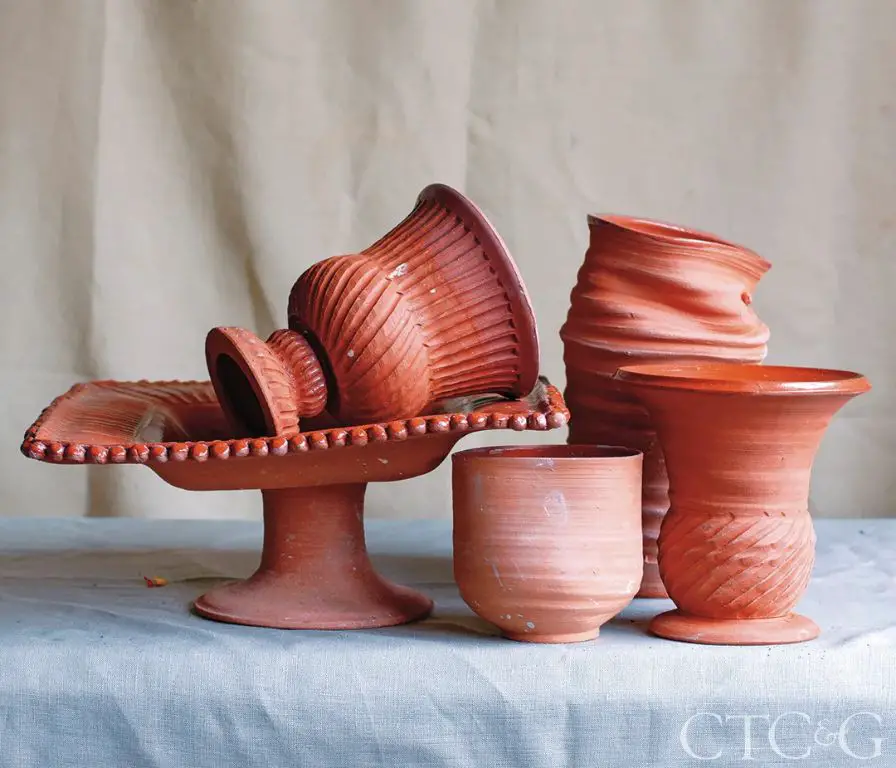
In contrast, stoneware’s impermeable nature due to higher firing temperatures allows it to be used for dinnerware, cookware, and liquid storage. Common stoneware items include mugs, bowls, casserole dishes, pitchers, and jugs. The high firing gives stoneware added strength over earthenware, but reduces the color palette for glazes. Stoneware clay can also be used for architectural tiles and outdoor sculpture because of its durability.
Identifying Marks
There are some key visual differences and identifying marks that can help determine whether a piece is earthenware or stoneware:
Earthenware usually has a course texture and can feel gritty to the touch. Glazes tend to be matte and colors are often muted earth tones. It may have obvious fingerprints or maker’s marks engraved or stamped into the piece, rather than under the glaze. According to A very basic guide to identifying ceramics, earthenware often has unglazed bottoms where you can see the light brown clay body.
Stoneware has a finer texture and feels smooth to the touch. Glazes tend to be glossy and colors are often bolder and darker. Any identifying marks are usually located under the glaze. Stoneware cups, bowls and plates usually have unglazed bottoms where you can see the rough, dark grey or brown material, as noted on Gaslight Square Shoppes.
So in summary, the texture, glaze, color, identifying marks and clay color on the bottom are key things to examine to identify whether a ceramic piece is likely earthenware or stoneware.
Testing Methods
There are a few tests that can be done to help identify whether a clay piece is earthenware or stoneware:
Scratch Test – Using a sharp tool, scratch the surface of the clay. Earthenware will scratch more easily than stoneware. Stoneware is denser and more durable.
Absorption Test – Weigh the piece when it is completely dry. Then submerge it in water for at least 24 hours. Remove it, pat dry the surface, and weigh it again. Earthenware will absorb more water, resulting in more weight gain. Stoneware is less porous. Is my sherd earthenware, stoneware or porcelain? – YouTube
Sound Test – Tap gently on the piece and listen to the sound. The higher pitched, metallic ringing sound indicates higher vitrification and stoneware. The duller thud sound is typical of earthenware.A very basic guide to identifying ceramics
Glaze Test – Examine the glaze, if present. Earthenware glazes tend to be softer, can scratch/flake off easier. Stoneware glazes are harder, glassier, more durable to abrasion.Authenticity testing
Pricing
Historical pricing data shows that stoneware has generally been more expensive and valued higher than earthenware. In the 19th century, stoneware was often double the price of comparable earthenware pieces according to price lists and sales records.
For example, one study comparing prices in the 1800s found that on average, stoneware prices were 1.5 to 2 times higher than earthenware prices for similar vessels (see Earthenware Cooking Vessels in the Northeast, 1780-1880). Another analysis of a Baltimore pottery’s price lists in the 1830s-1860s showed stoneware prices were generally 60-100% higher than earthenware (see Marketing American Pottery: Maulden Perine in Baltimore).
Today, this pricing differential remains. On the collectibles market, stoneware pieces tend to command higher prices and are more sought after by collectors than earthenware. The higher fired stoneware is denser, more durable, and rarer, contributing to its higher value.
Examples
Common examples of earthenware include flower pots, bowls, mugs, and tiles. Earthenware tends to be porous and less durable than stoneware. Some notable earthenware examples are majolica, Delftware, creamware, and buff earthenware. According to the Northern Ceramics Society, buff earthenware was first developed in the 1740s in England and was widely used for teawares. Delftware originated in the Netherlands and was often hand-painted with decorative blue designs.
Stoneware is considered a higher quality ceramic and is commonly used to make crockery, jugs, bottles, and decorative items. Notable stoneware examples include salt-glazed, Albany slip, and Bristol glaze. According to an article by the Chipstone Foundation, relief molded stoneware was produced in South Carolina in the early 19th century, influenced by potters from Baltimore. The article states “The three earthenware examples and the stoneware example are near-exact copies of forms and styles made in Baltimore during the first quarter of the nineteenth century.” https://chipstone.org/article.php/538/Ceramics-in-America-2013/From-Baltimore-to-the-South-Carolina-Backcountry:-Thomas-Chandler%27s-Influence-on-19th-Century-Stoneware
Conclusion
In summary, the key differences between earthenware and stoneware come down to their composition, porosity, firing temperature, and durability. Earthenware clay contains more organic matter and is fired at lower temperatures, making it more porous and prone to chipping or cracking. Stoneware contains more minerals, is non-porous, and is fired at higher temperatures, giving it greater strength and water resistance. When examining a clay piece, signs of earthenware include a rough orange or red color, absorption of water, and potential cracking or chipping. Signs of stoneware include a gray, smoother appearance, little to no water absorption, and high durability. To conclusively identify a clay type, examination of the clay body, glaze, color, firing temperature, and purpose will provide definitive clues. For most applications, stoneware is the preferred type for its versatility and durability. But both earthenware and stoneware have their places in pottery and ceramic works.
To summarize, examine the clay’s color, texture, porosity, markings, intended use and durability. Compare to examples of known earthenware and stoneware pieces. Consider the firing temperature and glaze. Use staining or water absorption tests if still uncertain. With careful inspection and knowledge of the key properties of each clay type, identifying whether a piece is earthenware or stoneware becomes clear.

